Map of Hoa Binh: The Land of Legends and the Cradle of Viet-Muong Culture
Hoa Binh is a province in Vietnam’s Northwest region. With its pristine landscapes, unique cuisine, and vibrant ethnic cultures, this land draws thousands of visitors each year. If you and your family are planning a trip here, don’t miss the guide below. Let’s explore this heroic yet poetic land together.
Geography & Administrative Divisions
Located at the crossroads of three key Vietnamese regions—the Northwest, Red River Delta, and North Central Coast—Hoa Binh Province is a gateway between the lowlands and the mountains. Just about 73 km southwest of Hanoi, Hoa Binh is not only geographically strategic but also culturally rich, home to ethnic diversity and deep historical roots.
Here are some key geographical and administrative facts about Hoa Binh:
Total area: approximately 4,590 km²
Population: around 892,373 people
Topography: largely mountainous, with valleys, rivers, and karst formations
Region: Northwestern Vietnam
Borders: Hanoi and Ha Nam to the east, Son La to the west, Phu Tho to the north, Ninh Binh and Thanh Hoa to the south
Capital city: Hoa Binh City, serving as the administrative, economic, and cultural center
Note: Some districts have merged recently due to administrative reforms. Always check the latest official map for the most accurate district boundaries.
Climate & Best Time to Visit
Hoa Binh enjoys a typical tropical monsoon climate with two main seasons: a hot and rainy season from May to October and a cooler, drier season from November to April. Thanks to its mountainous terrain, many areas—like Mai Chau, Thung Nai, and Lung Van—offer pleasant temperatures year-round, making Hoa Binh a wonderful escape from the city heat.
Here’s what each season has to offer:
May–June: Golden rice fields in Mai Chau paint the valleys in warm hues, perfect for trekking and cultural experiences.
May–August: The emerald-green Da River flows at its clearest in Thung Nai, ideal for boat rides and lakeside relaxation.
Spring (February–April): Lung Van, the “roof of the Muong land,” is blanketed in mist and blooming wildflowers—perfect for scenic photography and cultural immersion.
Winter (November–January): Warm up in Kim Boi Hot Springs, where the naturally heated mineral waters soothe your body and soul.
Top Attractions & Natural Landscapes
When visiting Hoa Binh, you’ll have the chance to witness nature’s breathtaking masterpieces with your own eyes. The province is renowned for its vast green forests and the pristine, untouched beauty of caves, waterfalls, and uniquely shaped rock formations crafted by nature. Let us take you on a journey to explore the most famous tourist attractions in Hoa Binh.
Mai Chau Valley
Mai Chau is a mountainous district located in the northwest of Hoa Binh Province. This area boasts fresh, rustic natural landscapes with stunning valleys. It’s a peaceful escape that invites you to slow down and soak in the beauty—definitely a place worth visiting.
Nestled between lush mountains and rice fields, Mai Chau Valley is a tranquil haven where stilt houses, buffalo paths, and ethnic culture paint a picturesque landscape. Visitors can bike through quiet villages, enjoy local homestays, and savor traditional Thai cuisine—making it one of Hòa Bình’s most beloved cultural escapes.
Coc Da Bac Cave
Hidden in the limestone mountains of Lac Thuy, this mysterious cave complex captivates with shimmering silver rock formations and a unique toad-shaped stalactite at the entrance. Its cool air, sacred legends, and magical light reflections make it a peaceful yet otherworldly spot for nature lovers.
Hoa Binh Hydropower Plant
This is an iconic landmark of Hoa Binh City. The hydroelectric plant was constructed between 1979 and 1991 on the Da River. Before being surpassed by the Son La Hydroelectric Plant, it was the largest hydroelectric plant in both Vietnam and Southeast Asia. Today, it remains a popular check-in spot for visitors exploring Hoa Binh.
Surrounded by mountains and islets, the area is ideal for boat tours, fishing, and admiring the dam’s monumental engineering. The sunset here is breathtakingly serene.
Thung Khe Pass
Thung Khe Pass, also known as White Stone Pass, is a famous mountain pass known for its rugged terrain, breathtaking natural scenery, and a small market at its summit. This spot is both an ideal rest stop and a scenic viewpoint. Visitors can experience all four seasons in a single day here. On clear days, the pass is often covered in white clouds, with gaps revealing the valley below—creating a stunning and majestic landscape.
Thung Nai Reservoir Area
Thung Nai is a green gem nestled in the heart of the Hòa Bình hydropower reservoir, often considered a special gift from the Đà River. This place is renowned for its poetic and harmonious beauty, especially the small islands rising from the clear water. The scenery closely resembles an inland version of Ha Long Bay, earning Thung Nai the nickname “Ha Long Bay on land.”
Kim Boi Hot Springs
Tucked away in a quiet valley, Kim Boi Hot Springs is famed for its warm, mineral-rich waters believed to soothe ailments and revitalize the body. Whether soaking in public baths or enjoying a private spa resort, it’s a must-visit for wellness seekers—especially in the colder months.
Lac Village
Autumn is the perfect time for travelers to visit Bản Lác Village and immerse themselves in the poetic charm of the Northwestern mountains floating gently along the clouds or admire the blooming flowers painting the sky in vibrant hues.
The village roads have been newly paved—clean and spacious—adding to the peaceful atmosphere of this over-700-year-old village. Surrounded by bamboo groves and traditional stilt houses elevated 2 meters off the ground, Bản Lác proudly showcases the distinctive culture of the Thai ethnic group.
The most delightful experience here is cycling around the village, taking in the lush green rice fields, and listening to the soothing sounds of bubbling streams. Don’t forget to rent a traditional Thai outfit and capture some stunning photos to mark your visit.
Tu Son Waterfall
Surrounded by forests and cliffs, Tu Son Waterfall is a multi-layered cascade that flows gracefully over giant rocks, forming natural pools below. The trail to the falls is shaded and peaceful, making it a refreshing break for hikers and a dreamy spot for photographers.
Man Nguyen Cave
Meaning “fulfilled wish,” Man Nguyen Cave is a lesser-known gem located in the Da Bac district. Its interior dazzles with colorful stalactites and poetic silence. Locals often associate the cave with positive fortune, making it not just a visual treat but a spiritual destination.
Cuisine & Local Specialties
Savor the unique culinary heritage of Hòa Bình, where mountain flavors and ethnic traditions blend in every bite. Here are some must-try dishes:
Bamboo-tube Sticky Rice
Bamboo-Tube Sticky Rice tops the list of must-try dishes in Hòa Bình. While not exclusive to this province, Hòa Bình’s version offers a uniquely rich and memorable flavor. This dish is made from premium glutinous rice combined with creamy coconut milk.
What sets Hòa Bình’s cơm lam apart is its distinct aroma and taste, unlike any other. To prepare it the traditional way, the sticky rice is soaked overnight for 8 to 10 hours. It’s then mixed with shredded coconut flesh and packed into bamboo tubes about 30 cm long. A small amount of coconut milk is added, and the tube is sealed with sugarcane before being slowly grilled over a wood fire for about 2 hours until perfectly cooked.
Grilled Da River fish
The Da River flows through Hoa Binh Province, bringing with it an abundance of freshwater resources—most notably, the prized Da River fish. Locals have long taken advantage of this natural bounty to create the famous grilled Da River fish, a specialty dish of the region. Living in a wild environment, these fish are firm, flavorful, and have a rich yet lean texture.
After being caught, the fish are cleaned and clamped between small bamboo sticks. They are first sun-dried until slightly firm, then grilled over charcoal. Before grilling, the fish are seasoned with salt and aromatic ingredients such as ginger, lemongrass, and shallots to enhance their flavor. During the grilling process, the cook must fan the fire evenly to prevent the fish from burning or losing its fragrant aroma. This dish is one of the most beloved culinary highlights among Hoa Binh locals.
Boiled Roasted Man Pork
Boiled roasted Man pork is one of Hoa Binh’s most unforgettable dishes, capturing the hearts of diners with its gentle aroma and naturally sweet flavor. What makes it truly special is its unique preparation method. Locals first roast the pork over fire, then boil it—this two-step process enhances the dish’s rich and savory taste.
Once boiled, the pork is thinly sliced and served on a plate. The experience is elevated when dipped in cham cheo, a traditional Northwestern dipping sauce. Besides boiling and roasting, This special breed of pork from Hoa Binh can be grilled, stir-fried, pan-seared, or even roasted whole; each preparation brings out a different layer of flavor.
Stir-fried bee larvae with bamboo shoots
Two must-try specialties of Mai Chau are wild honey bees and pickled bamboo shoots. The unique combination of these ingredients creates the distinct dish: stir-fried wild bees with sour bamboo shoots. At the end of summer, locals often harvest large wild beehives and stir-fry the young bees with naturally pickled forest bamboo.
The result is an unforgettable culinary experience—the rich aroma and creamy taste of the young bees blend perfectly with the crunchy texture and tangy-spicy flavor of the bamboo shoots, making it a true explosion of taste.
Pomelo Leaf-Wrapped Pork Rolls
Pomelo Leaf-Wrapped Pork Rolls is a delicious specialty from Hoa Binh, originating from the Mường ethnic group. Traditionally, the Muong people serve this dish to honor special guests during festivals and celebrations. It features a special combo of flavors—spicy, bitter, and sweet—and is known for its high nutritional value, aiding digestion and promoting healthy blood circulation.
When tasting the dish, you’ll notice the crispy texture of the grilled pomelo leaves paired with the tender, savory pork filling inside. It may remind you of Vietnamese betel leaf-wrapped beef, but with a more distinct bitter note from the pomelo leaves.
Mai Chau sticky rice
Mai Chau Sticky Rice is a cherished delicacy of the Thai ethnic people in Hoa Binh. Grown on terraced fields and harvested during the ripening season, the glutinous rice—called nep nuong—is known for its rich aroma and tender, sticky texture.
What makes this dish stand out is its vibrant colors, naturally extracted from forest leaves, flowers, and fruits—without any chemical dyes. Typically prepared as xoi ngu sac, the five colors symbolize the five elements in traditional beliefs. This unique culinary tradition is not just delicious but also deeply cultural—a Mai Chau specialty unlike any other.
Mai Ha Wine
In Mai Chau–Hoa Binh, Mai Ha wine is a beloved local specialty, well-known not only throughout the province but also in neighboring regions. Wherever you go in Mai Chau, people proudly speak of Mai Ha wine as a true regional delicacy.
This unique wine is distilled from fermented forest leaves, using no external additives. Even before it touches your lips, its rich, fragrant aroma fills the air. Just inhaling it deeply is like being immersed in the very essence of the forest and the land—as if you’ve already drunk your fill. It’s a wine that makes you feel intoxicated even before tasting it, much like the warm hospitality of the people of Mai Ha.
Cao Phong Oranges
Visitors to Hoa Binh not only have the opportunity to enjoy delicious local dishes on-site but also have the opportunity to bring home specialties as gifts for their family and friends. Among them, Cao Phong oranges stand out as a signature fruit of the region and a perfect souvenir. What makes Cao Phong oranges special is their thin peel, naturally sweet flavor, minimal seeds, and long shelf life—making them not only tasty but also practical for gifting.
Cultural Heritage & Ethnic Soul of Hoa Binh
Ethnic Diversity & Indigenous Identity
Hoa Binh is one of Vietnam’s most ethnically diverse provinces, where tradition thrives in the daily lives of its people. The province is home to six main ethnic groups, with the Muong being the dominant community, followed by others who contribute to the rich cultural tapestry of the region. These ethnic minorities have not only shaped the land through agriculture and forest living but also preserved distinctive lifestyles, beliefs, and rituals.
Major ethnic groups in Hoa Binh include
Muong: Making up more than half the population, the Muong are considered closely related to the ancient Viet people. They live mainly in stilt houses, wear indigo-colored garments with silver jewelry, and celebrate life through gong music, mo recitations, and traditional festivals.
Kinh: Though not a majority in Hoa Binh, the Kinh contribute to trade, education, and integration with national culture. They often settle in urban centers or mixed communities.
Thai: Known for their colorful textiles, wooden stilt houses with curved roofs, and vibrant Xoe dance performances. The Thai people often inhabit valleys and riversides.
Tay: The Tay are agriculturalists who cultivate rice in terraced fields. Their culture is rich in Then singing and folk tales, and they maintain a strong sense of community.
Dao: Easily recognized by their elaborate red headscarves and symbolic embroidery. The Dao uphold age-old shamanic rituals and spiritual ceremonies passed down for generations.
Together, these groups make Hoa Binh a living museum of Vietnam’s ethnic diversity—where every village, market, and melody tells a unique story of heritage.
Spiritual & Artistic Traditions
Spirituality runs deep in Hoa Binh’s cultural veins, especially among the Muong people, whose worldview is shaped by a close bond with nature and the unseen. Their daily life reflects a harmonious balance between yin and yang, the visible and invisible worlds, and a deep respect for ancestral spirits.
At the heart of their spiritual life is the Mo Muong—a complex system of chants, rituals, and oral literature passed down through generations. Performed during important life events such as funerals, housewarmings, or agricultural ceremonies, Mo Muong serves as a bridge between the human and spiritual realms. In recognition of its cultural and historical value, it has been listed as a National Intangible Cultural Heritage.
Accompanying these rituals are various forms of folk art:
Gong performances feature echoing rhythms that are believed to ward off evil and invite blessings.
Traditional singing and dancing, often depicting myths, love stories, or communal life in mountain villages.
Through these artistic expressions, Hoa Binh’s people preserve not only their spiritual beliefs but also a profound connection to the forest, the land, and generations past.
Festivals & Ceremonial Life
Traditional festivals in Hoa Binh reflect the spiritual values, agricultural roots, and deep community bonds of its ethnic groups—especially the Muong people. These events blend sacred rituals with joyful celebrations, creating memorable cultural experiences for locals and visitors alike.
Key traditional festivals include:
Khai Ha Festival (Lowering Ceremony Festival): The most important celebration of the Muong people, held annually after Tet to mark the beginning of the farming season. Spanning three days, the festival features various cultural activities, including ceremonial offerings, traditional games, sports competitions, and vibrant folk performances. It serves as a meaningful occasion to honor the ancestors who first cleared the land and to pray for a bountiful, prosperous year ahead
Lo Son Fish Catching Festival: a lively local celebration centered around the tradition of hand-catching fish in streams and rivers. Originally a ritual to pray for abundant fish and agricultural prosperity, the festival has evolved into a joyful community event that strengthens local bonds. Participants come together to enjoy music, games, and shared feasts in a spirited atmosphere.
Den Bo Festival (Bo Temple Festival): held at the sacred Bo Temple along the Da River and serves as a spiritual ceremony to honor protective deities and national heroes. During the festival, locals offer incense and prayers, seeking favorable weather, peace, and a fruitful harvest for the coming year.
These festivals not only preserve Hoa Binh’s spiritual heritage but also invite travelers to witness—and take part in—the vibrant ceremonial life of Vietnam’s northern mountains.
Traditional Craft Villages
Hòa Bình is home to various traditional craft villages, with 11 officially recognized by the provincial government. These villages not only play a vital role in preserving intangible cultural heritage but also contribute to the development of community-based tourism, offering visitors immersive experiences rooted in local identity.
Notable craft villages include:
Brocade weaving villages: Practiced mainly by ethnic minority women, brocade weaving in Hoa Binh is known for its bold patterns, natural dyes, and meticulous handwoven techniques. Each piece tells a story of cultural pride and craftsmanship.
Can Wine villages: A specialty of the Northwest mountains, Ruou Can is made from glutinous rice and forest herbs, fermented in large jars, and drunk through bamboo straws. Some villages are famous for producing distinctive cocktails with rich, earthy flavors.
Glass noodle-making villages: Using pure arrowroot starch, Hoa Binh’s glass noodle is prized for its transparency and chewiness. The production process remains largely manual, preserving its traditional essence.
Rush weaving villages: Skilled artisans use rush (cói) to create everyday and decorative items such as mats, handbags, and baskets, combining practicality with artistic flair.
Other crafts: Across the province, visitors can also discover smaller villages specializing in woodworking, silver jewelry, and Dó paper-making, all echoing the ingenuity and resilience of local life.
How to Get to Hoa Binh from Hanoi
Reaching Hoa Binh from Hanoi is convenient and offers several travel options to suit different preferences and budgets:
By bus: Public buses to Hoa Binh depart regularly from major bus stations such as My Dinh, Giap Bat, and Yen Nghia. Ticket prices start from 60,000 VND (one way), making it a budget-friendly choice for travelers.
By limousine: For added comfort and privacy, you can opt for a limousine service, which costs from 220,000 VND (one way).
By private car: Self-driving is a wonderful option for those who want flexibility and scenic views. The most popular and straightforward route is via the Hoa Lac– Hoa Binh Expressway (New Highway 6). Alternatively, you can take the old route: exit the expressway, turn left onto National Road 21, and pass through Xuan Mai (Old Highway 6). Depending on your final destination in Hoa Binh, you can choose the route that best suits your plans.
By motorbike: For adventurous travelers, riding a motorbike offers a more immersive journey. The recommended route is to follow Nguyen Trai Street from central Hanoi, pass through Ha Dong, and continue along National Road 6 heading west.
Accommodation in Hoa Binh
Hoa Binh offers a wide range of accommodations to suit different travel styles and budgets. The most popular areas for overnight stays include Mai Chau, Kim Boi, and Luong Son.
Budget homestays start from 300,000–600,000 VND per night, ideal for travelers seeking an authentic local experience.
Mid-range resorts and eco-lodges typically range between 1,000,000-2,500,000 VND per night, offering comfortable amenities and scenic views.
Luxury retreats and wellness resorts can cost 4,000,000 VND per night on weekdays and even more on weekends or holidays.
Most accommodations are designed to blend with nature, featuring stilt houses, wooden architecture, or eco-friendly villas, while some high-end resorts include modern facilities like spas, onsen baths, and infinity pools.
Map of Hoa Binh—A Land Where Culture, Nature, and Legend Meet
Hoa Binh, Vietnam, is a must-see destination for anybody looking to experience Vietnam's true mountain culture and stunning scenery. With its easy access from Hanoi and a plethora of sights, local food, and cultural treasures, arranging a vacation to Hoa Binh ensures an enriching and unforgettable experience. Don't pass up the opportunity to discover this hidden treasure on your next vacation schedule.
>>> Map of Lang Son: The Muse of Vietnam’s Northeast
>>> Map of Ninh Binh: Your Ultimate Guide to Vietnam’s Inland Ha Long Bay
Send us your comments about : Map of Hoa Binh: The Land of Legends and the Cradle of Viet-Muong Culture
Required fields *
You might also be interested
Travel ideas
Need some inspiration? Discover some of the best tours in Vietnam, which are highly appreciated by our clients. An excellent starting point to help you choose the right trip to Vietnam, Laos, Cambodia, Burma or Thailand, whether you are traveling alone, as a couple, as a family or with friends.
And because this trip is yours, feel free to customize it as you wish!
Vietnam Cambodia Itinerary 14 Days
Hanoi – Hoa Binh – Mai Chau – Ninh Binh – Halong bay – Hue - Danang – Hoian – Saigon – Ben Tre - Can Tho – Saigon - Siem Reap Angkor - Tonlé Sap - Siem Reap – Ta Prohm - Departure
Vietnam 14 Day Itinerary
Vietnam 14-day itinerary covers the country’s top highlights and quintessential experiences for an unforgettable journey.
Honeymoon Tour Packages In Vietnam 12 Days
Saigon Arrival - City Tour – Mekong Delta – Danang – Hoian - by flight - Da Nang – Hanoi - by flight – Halong - overnight on junk – Departure
Authentic Hoang Su Phi Trekking Tours
Hoang Su Phi trekking tours take you to stunning terraces, meet few tourists, connect with locals and enjoy authentic culture.
Best Nha Trang Beach Tour 4 Days
Saigon/Hanoi – Nha Trang relaxation – Saigon/Hanoi – Departure
Mekong Delta Bike Tour Itinerary 7 Days
Cycle through the Mekong Delta in 7 days, discovering floating markets, orchards, craft villages, and tranquil green islands.
Are you interested in this tour?




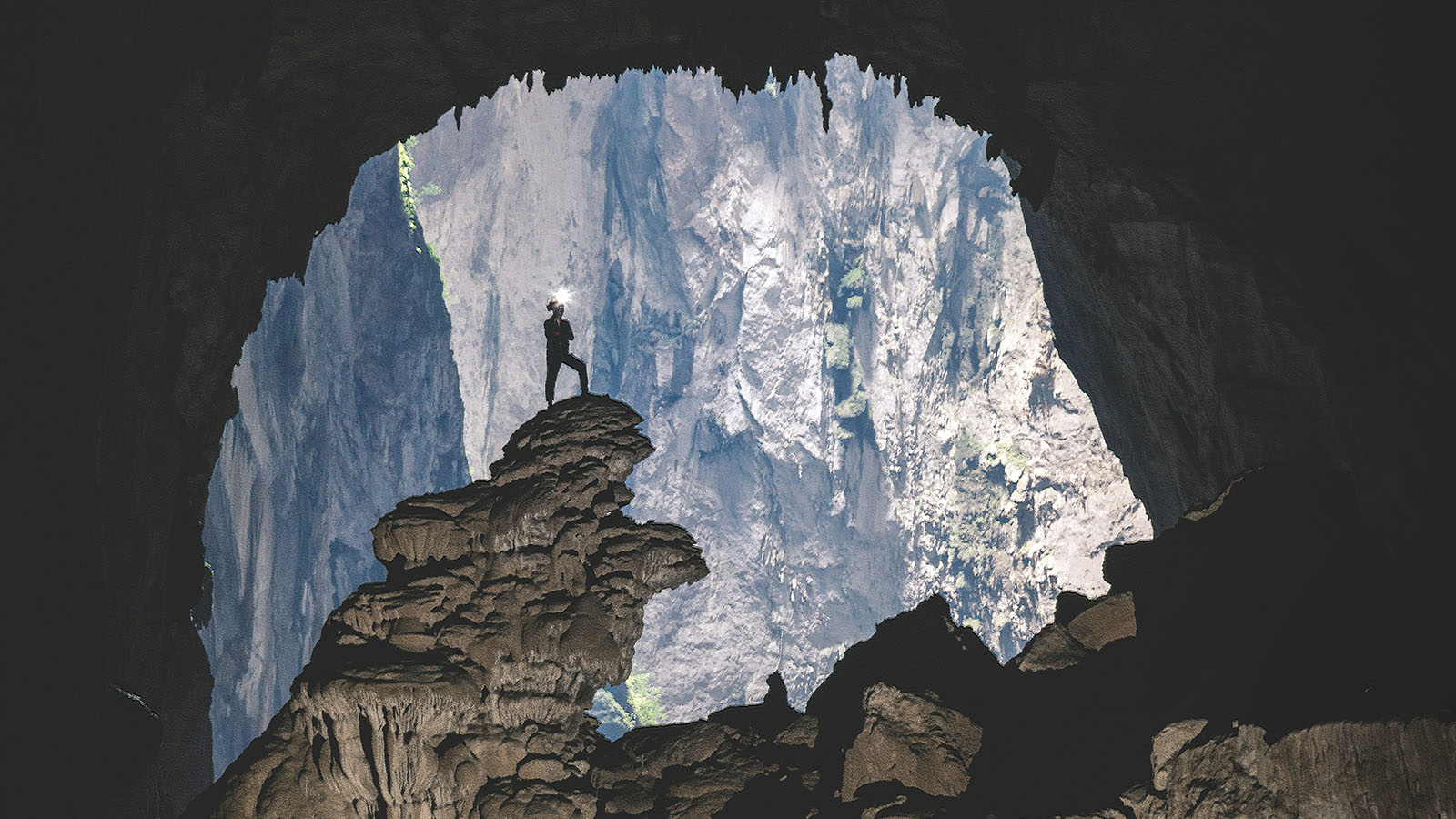





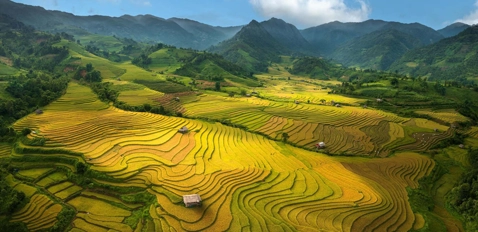





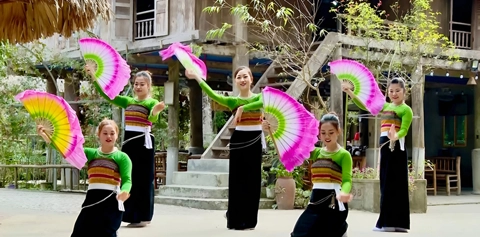
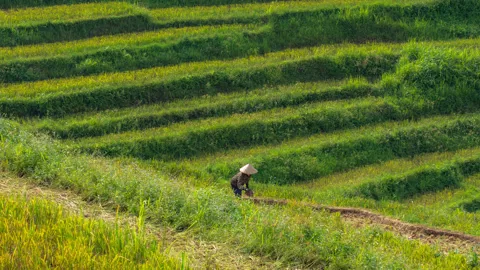


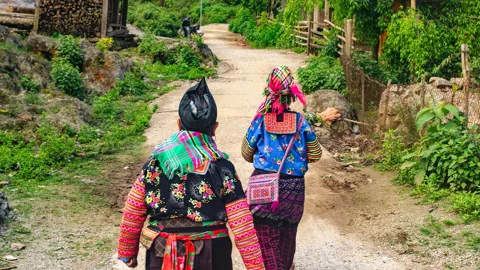
















Comment